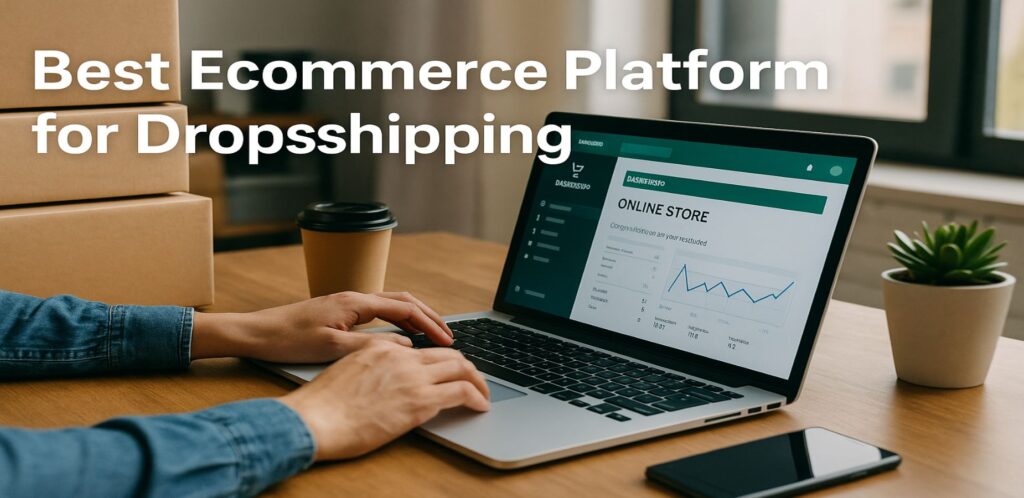Starting a dropshipping business requires careful planning, and choosing the right eCommerce platform is one of the most important decisions. A reliable platform helps streamline product management, automate order fulfillment, and integrate easily with suppliers. It also ensures a smooth customer experience with secure payments and fast checkout processes.
From customisable templates to marketing tools and analytics, the ideal platform should support every aspect of your online store. As dropshipping continues to grow in popularity, platforms now offer features specifically designed for this business model, catering to beginners and experienced entrepreneurs seeking flexibility, scalability, and efficient store operations.
In this blog, we will take a look at 10 Best Ecommerce Platforms for Dropshipping.
Factors to Consider when Choosing the Best eCommerce Platform
- Ease of Use: Choose a platform with an intuitive interface and minimal learning curve to help you quickly set up and manage your online store efficiently.
- Integration Capabilities: Ensure the platform supports integration with dropshipping apps, payment gateways, shipping tools, and marketing software for streamlined business operations and automation.
- Customisation and Design: Look for platforms that offer flexible templates and customisation options, allowing you to create a unique brand experience tailored to your target audience.
- Scalability: Select a platform that grows with your business, offering features and plans that support increasing product listings, traffic, and order volume.
- Payment and Transaction Features: Opt for platforms with multiple payment options, secure checkout, and low transaction fees to enhance customer trust and boost conversion rates.
- Customer Support: Choose a platform with responsive, 24/7 customer support via chatbot, phone, or email to resolve technical issues and maintain store uptime.
- Mobile Optimisation: Make sure the platform provides mobile-optimised themes and responsive design, ensuring a smooth shopping experience for customers using smartphones and tablets.
- Analytics and Reporting: Use platforms with built-in analytics to track performance metrics, user behavior, and sales data for better business decisions and marketing strategies.
List of 10 Best Ecommerce Platforms for Dropshipping
1. Shopify

Shopify is an Ecommerce software with high convenience and strong support of dropshipping. Amazon FBA allows automated imports of products, order fulfillment, and synchronisation of inventory to a large variety of applications such as Oberlo or DSers.
It has a number of themes to be customised and offers in-built Shopify SEO to increase visibility. Shopify also offers safe payment gateways, mobile friendly optimisation and expandable plans to boost expanding companies. It has a convenient dashboard that is suitable for beginners, and a developer can get advanced customisation.
Through its 24-hour support and plenty of documentation, Shopify continues to be a destination of choice among novice dropshippers and other well-established eCommerce merchants.
Get your Shopify Partner Account to start creating development stores.
Pros
- User-friendly interface: Intuitive design, ideal for beginners
- Extensive app marketplace: Offers a wide range of plugins for customisation and functionality
- Robust integration with dropshipping suppliers: Includes a seamless integration with Printful
- Reliable customer support: 24/7 support through different channels
Cons
- Transaction fees: Additional charges apply if not using Shopify Payments
- Limited free templates: Premium templates can be costly (starting at $100)
- Scalability costs: Higher-tier plans can be expensive for small businesses
Pricing
- Basic– ₹1,994/month
- Grow– ₹7,447/month
- Advanced– ₹30,164/month
- Plus– ₹1,75,000/month
2. WooCommerce
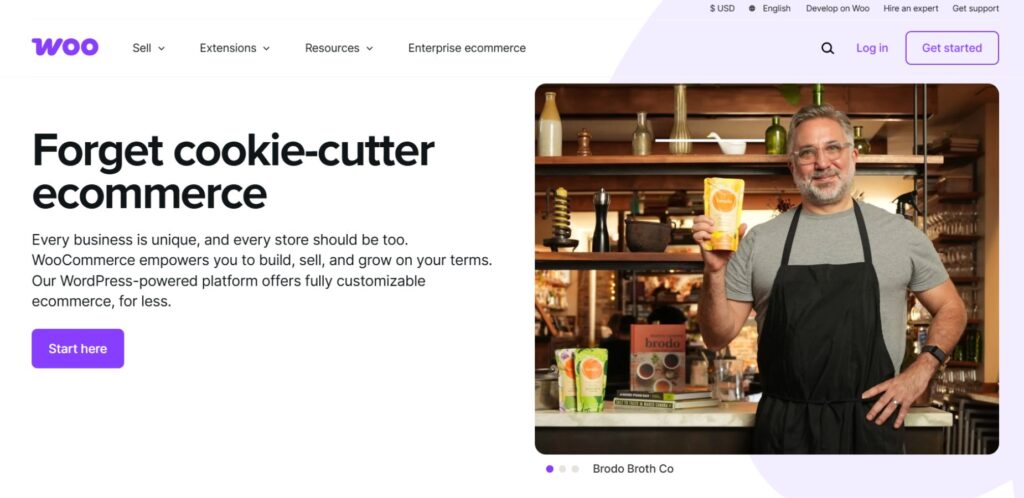
WooCommerce is quite an effective WordPress plugin which transforms any WordPress site into a full-fledged online shop. It is perfect when you want to be able to use dropshipping: it has an abundance of extensions such as AliDropship and Spocket to conveniently add suppliers.
WooCommerce is fully customisable and as an open-source, one can do it. It maintains international payments as well as automated tax estimates and shipping infrastructure. Nonetheless, it needs simple technical know-how in terms of setting up and hosting.
It is highly popular due to its huge community, extensive database of plugins, and the affordability factor, which is why it is the best option to drop shippers and entrepreneurs who desire to have custom control over their dropshipping store in terms of its appearance, functionality, and other backend activities.
Pros
- Highly customisable: Full control over design and features via WordPress
- Open-source and free: No licensing costs to get started
- Extensive plugin ecosystem: Thousands of free and paid extensions available
- Strong SEO capabilities: Built-in tools for search engine optimisation
Cons
- Requires technical knowledge: Not ideal for beginners without WordPress experience
- Separate hosting needed: Must be installed on a web hosting platform
- Maintenance overhead: Needs regular updates and security management
Pricing
Custom Pricing
3. BigCommerce
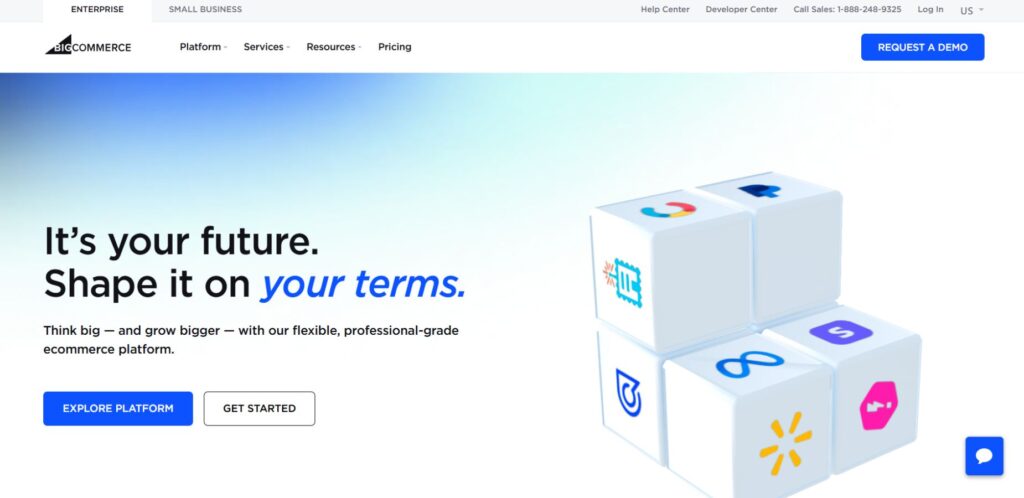
BigCommerce is an advanced, scalable eCommerce platform suitable for medium or large dropshipping businesses. It has built-in support for dropshipping applications such as Printful and AliExpress integration, as well as multi-channel selling on Amazon, eBay, and social channels.
BigCommerce focuses on performance and visibility because it does not charge any transaction fees, incorporates SEO functionalities, and offers responsive themes. It has strong analytics, flexible APIs, and sophisticated product management system that provides merchants with a strong backend to manage the high-volume stores.
It might not be as easy to learn at first as Shopify, but BigCommerce gives your growing business the chance to enjoy greater capabilities, fast performance and control.
Pros
- Built-in features: No need for many third-party apps
- Multi-channel selling: Integrates with Amazon, eBay, Facebook, and Instagram
- No transaction fees: Even with third-party payment gateways
- Advanced SEO: Helps drive more organic traffic
Cons
- Learning curve: Interface and features may be complex for beginners
- Design flexibility: Fewer themes compared to Shopify
- Price-based limitations: Sales thresholds on plans may trigger automatic upgrades
Pricing
- Standard– $39/month
- Plus– $105/month
- Pro– $399/month
- Enterprise– Custom Pricing
4. Wix eCommerce
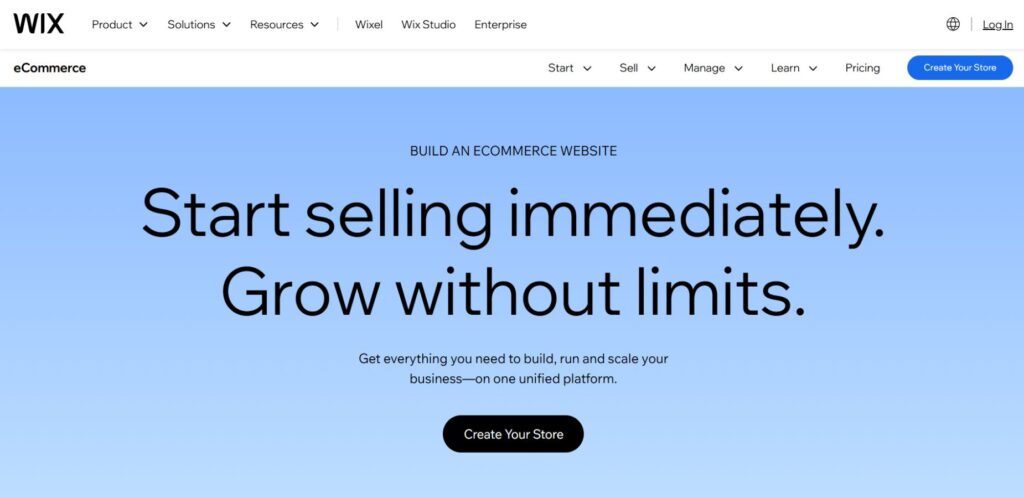
Wix eCommerce is user-intuitive and convenient to use, featuring a drag-and-drop technology that works best within the framework of small to mid-sized dropshipping organisations. It facilitates dropshipping by integration with such services as Modalyst or Spocket.
Wix offers professionally-designed templates, mobile readiness, safe payment gateways and stock control. Its backend consists of pre-installed SEO, abandoned cart recovery, and marketing automatisation functionalities.
Wix is not as scalable as Shopify/BigCommerce, though, and comes at a low cost and is easy to use, thus being a good first platform. It is most suitable to those entrepreneurs who are interested in rapid setting up of shops, creative flexibility, and no-code environment with preliminary dropshipping capabilities.
Pros
- Drag-and-drop builder: Very easy to design and customise
- Affordable pricing: Great for new and small businesses
- Mobile optimisation: Stores look good across devices
- Integrated dropshipping: Works well with Modalyst and Printful
Cons
- Limited scalability: Not suitable for large inventories or high-growth stores
- Less flexible backend: Compared to open-source platforms
- Slower loading times: Can affect user experience on content-heavy stores
Pricing
- Light– ₹250/month
- Core– ₹500/month
- Business– ₹900/month
- Business Elite– ₹1,800/month
5. Squarespace

Squarespace is design-oriented software that serves best to those creative and owning small businesses who have joined dropshipping. Reputed to be a visually attractive template, it is available to be integrated with Spocket in terms of product sourcing and fulfillment.
Squarespace includes the basics of eCommerce such as payment processing, inventory management, and marketing options as well as analytics. It has fewer dropshipping possibilities than Shopify or WooCommerce, but it works best with beginner brand-focused entrepreneurs who want to focus on both design and the narrative.
The aspect of mobile-friendliness, integrated SEO and email marketing software are also provided in the platform. Squarespace is an excellent choice of small drop shipping shops seeking to find elegance, simplicity, and design unity.
Pros
- Award-winning templates: Perfect for visually stunning storefronts
- Built-in tools: Includes email marketing, SEO, and analytics
- Great for small catalogs: Ideal for lifestyle and creative brands
- Integrated print-on-demand: Works with Spocket for dropshipping
Cons
- Limited eCommerce features: Lacks some advanced functionalities
- Few third-party integrations: More closed ecosystem
- Not ideal for large product catalogs: Less efficient for scaling
Pricing
- Personal– $25/month
- Business– $36/month
- Commerce Basic– $40/month
- Commerce Advanced– $72/month
6. Adobe Commerce

Adobe Commerce is an extremely configurable open-source commerce system that fits well with large businesses and highly sophisticated dropshipping solutions. It also provides such potent features as the advanced catalog management, the multi-store, and the smooth integrations with dropshipping applications such as AliExpress and Printful.
It is elastic enough to have total control over user experience, an off-checkout, and a backend process. Adobe enables scalability of architecture, strong APIs and analytics. It, however, needs a good technical expertise or developer team to run.
The Adobe store is a perfect solution for enterprises that want customizability at the enterprise level and are facing massive store performance, security, and selling globally with a complex level of products and selling them to international customers.
Pros
- Fully customisable: Suitable for large-scale businesses
- Enterprise-grade features: Includes advanced catalog, user, and order management
- Scalable architecture: Supports multi-store and multilingual setup
- Extensive extension marketplace: Offers robust developer tools
Cons
- Requires technical expertise: Not beginner-friendly
- High hosting and development costs: Expensive setup and maintenance
- Time-intensive: Complex backend requires regular monitoring and updates
Pricing
Custom Pricing
7. Shift4Shop

Shift4Shop is a fully hosting-based eCommerce solution built to serve businesses that want speed and growth. It hosts native dropshipping applications, live shipping quote, SEO utility and template customisation.
The network has limitless product listing, zero transaction charges, and powerful stocks. Connected to the most significant payment processors and marketing tools, Shift4Shop allows selling in multiple channels as well. Although its interface is not as new-comer friendly as Shopify, it attracts customers who wish to have a powerful interface and affordability.
Dropshippers should look up at Shift4Shop as an excellent services provider that offers an extensive toolset and freedom to scale without compromising the performance or the budget.
Pros
- No transaction fees: Keeps profit margins higher
- Comprehensive feature set: Includes built-in SEO, blog, CRM, and product management
- Fast loading speeds: Optimised for performance
- Free for U.S. merchants using Shift4 Payments
Cons
- Dated interface: Backend design could feel outdated
- Not as beginner-friendly: Requires time to master
- Limited free themes: Advanced customisation often needs coding
Pricing
An unlimited, enterprise-grade plan for $39/month.
8. Ecwid

Ecwid is a handy eCommerce solution, which allows users to add an online store to any site, whether it is WordPress, Wix or even social media. It takes care of dropshipping with the help of such apps as Printful and Spocket.
The strengths of Ecwid are multi-language, shopping on mobile, real-time shipping integrations. It is easy to use, especially its control panel which is user friendly. Getting a free plan with limited options is another alternative suggested by Ecwid and it is highly possible to use it to check dropshipping-related ideas.
It is not as adjustable as Shopify or WooCommerce, but it is ideal when you have a small business or a blog and want to add to it dropshipping features without creating a new version of your site. Ecwid is powerful, small and fast to use.
Pros
- Add to any site: Embeds into WordPress, Wix, or custom sites
- Easy setup: Beginner-friendly with guided store builder
- Free plan available: Test features without commitment
- Multichannel selling: Sells across Facebook, Instagram, and Amazon
Cons
- Limited design flexibility: Not as customisable as other platforms
- Smaller app marketplace: Fewer plugins and integrations
- Not ideal for large stores: Best for smaller product ranges
Pricing
- Starter– ₹450/month
- Venture– ₹1440/month
- Business– ₹2700/month
- Unlimited– ₹6800/month
9. OpenCart

OpenCart is free and open source eCommerce offering a great deal of customisation and flexibility. It facilitates dropshipping by such a third-party extension and module as AliExpress Dropship and Printful.
The OpenCart would be best suited to the technically experienced customer providing multi-store, in-depth reporting and payment/ shipping options. It also offers a simple administer space and needs to perform manual updates and management of plug-ins. The OpenCart is the system with no limit on products and possesses a large base to provide support.
Although it is not as simple to use as hosted platforms, it is considerably flexible, bearing in mind that it is free of acquisitions and can be used by tech-savvy entrepreneurs who want to create a dropshipping store that is customisable and flexible.
Pros
- Open-source and free: No upfront licensing fees
- Multi-store management: Run multiple storefronts from one admin panel
- Highly customisable: Access to code for deep customisation
- Large extension library: Thousands of free and paid modules
Cons
- Technical knowledge required: Complex setup and maintenance
- Less intuitive interface: Steeper learning curve
- Requires separate hosting: No
Pricing
Custom Pricing
10. Sellfy
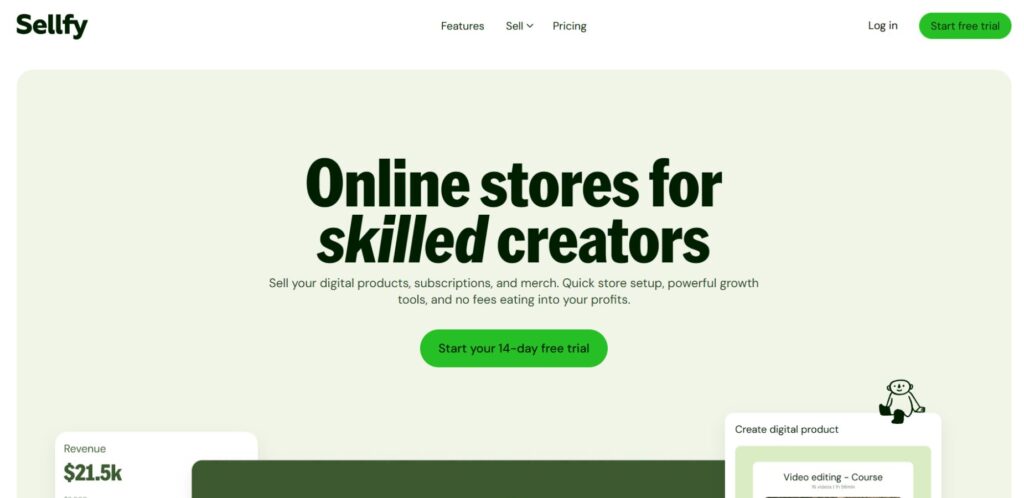
Sellfy is an easy-to-use eCommerce platform, which is aimed at creators selling digital products, but it also allows deals with physical goods and dropshipping. Sellfy enables its users to open a storefront fast, with tool-included marketing, product hosting, and customisation features.
It offers print-on-demand services, which has integrations on merchandise and apparel. It has a user-friendly interface and it can be set up quickly. Still, it does not offer a lot of customisation and integration with third-party than bigger platforms.
Sellfy is an excellent option in the event of solo entrepreneurs and influencer business and benefits from a simple way of selling on websites and on social media as well. It is simple, which is its strength because it is perfect as a choice of dropshippers with a niche or personal brand in mind.
Pros
- Quick setup: Launch a store in minutes
- Ideal for creators: Great for digital, print-on-demand, and physical products
- Built-in marketing tools: Includes email, discounts, and upsells
- Clean UI: Simple dashboard and storefront design
Cons
- Limited integrations: Fewer third-party apps
- Restricted design customisation: Template options are basic
- Not suitable for scaling: Best for small or solo ventures
Pricing
- Starter– $29/month
- Business– $79/month
- Premium– $159/month
Ending Thoughts
Choosing the right eCommerce platform for dropshipping is essential to building a successful and scalable online business. Each platform offers a unique blend of features-from ease of use and design flexibility to advanced analytics and supplier integration. While some tools are ideal for beginners, others cater to large-scale operations with technical needs. It’s important to align the platform’s strengths with your business goals, technical skills, and budget.
A reliable platform can simplify inventory management, improve customer experience, and automate operations-saving you time and boosting efficiency. As the dropshipping landscape continues to evolve, selecting the right foundation will ensure your store remains competitive, adaptable, and profitable in the long run. Choose wisely and grow strategically.
FAQs
1. Do I need coding skills to use these platforms?
No, most platforms offer drag-and-drop builders and pre-designed templates, eliminating the need for coding skills.
2. Can I switch platforms later if needed?
Yes, but switching may involve data migration, domain setup, and design adjustments, which can be time-consuming and complex.
3. What payment options are supported?
Most platforms support multiple payment gateways like PayPal, Stripe, and local payment methods for customer convenience.
4. Are there free plans available?
Some platforms offer free plans or trials, but advanced features typically require paid subscriptions.
